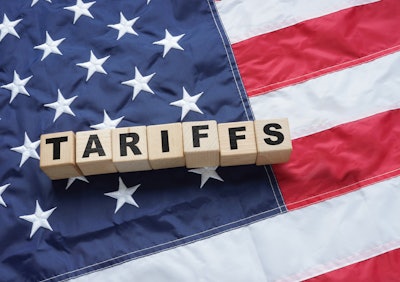
The GEP Global Supply Chain Volatility Index fell to -0.45 in February, from -0.21 in January, its lowest level since July 2023. While the index shows that overall supply chain capacity became more underutilized globally, regional data reveals significant geographical differences.
“With tariffs driving uncertainty, U.S. manufacturers are racing to secure materials, while Canadian and Mexican suppliers are feeling the squeeze from weaker export demand. In contrast, Asia’s supply chains are operating at full capacity, fueled by strong export growth,” says Krish Vengat N., GEP’s VP, consulting. “Companies must remain agile—diversifying supply sources and optimizing inventory strategies to navigate this ongoing volatility."
Key takeaways:
- In the United States, manufacturers’ demand for raw materials and components saw a notable uptick in February, reflecting a mix of preparations for orders and efforts to avoid higher costs from additional tariffs.
- U.S. factories also reported accelerating sales growth as their customers acted to front-run price and supply challenges arising from tariffs, driving up procurement. Efforts to mitigate tariffs also propelled stockpiling by U.S. manufacturers in February.
- In stark contrast, Mexican and Canadian manufacturers harshly reduced their purchases in response to a rapid reduction in exports as U.S. companies refrained from placing orders due to the threat of tariffs and trade policy uncertainty.
- In Europe, manufacturers are making inventories cutbacks. The continent’s supply chains continue to be underutilized as the industrial sector remains sluggish. That said, there does appear to be some early indication of recovery as the downturn in factory demand for inputs cooled to its weakest in two-and-a-half years.
- Asia supply chains continue to be at full capacity in February, as was the case at the start of the year, making them the most active globally. Factories in parts of the region such as China, Taiwan and India reported strong export growth.
- The global item shortages indicator, which tracks the availability of critical commodities, common inputs and components, remains below its long-term average, signaling robust global material supply levels. This metric implies that vendors have stock to meet orders from their customers.
- In February, global manufacturers filed fewer reports of backlogs rising due to inadequate staff capacity.
- Global transportation costs were unchanged from January, when they hit the highest in six months. Still, they remain close to levels which can be considered normal, by historical standards.
















![Pros To Know 2026 [color]](https://img.sdcexec.com/mindful/acbm/workspaces/default/uploads/2025/08/prostoknow-2026-color.mduFvhpgMk.png?ar=16%3A9&auto=format%2Ccompress&bg=fff&fill-color=fff&fit=fill&h=135&q=70&w=240)

